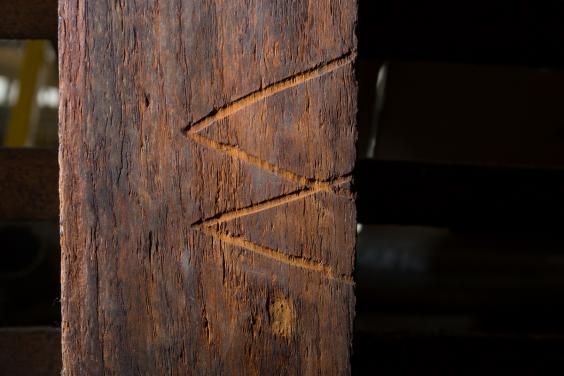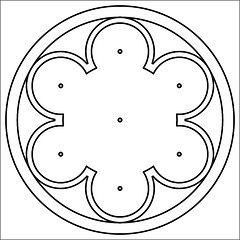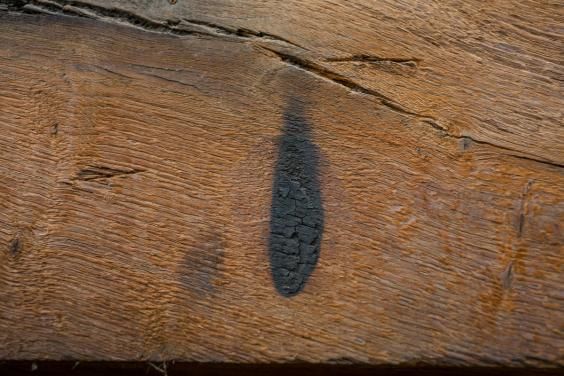
Archaeologists have found ‘ritual protection’ marks at the Tower of London, indicating that the inhabitants believed in magic to repel the Devil and the spells of witches from the 1000 year-old castle.
Dozens of ‘ritual protection’ marks have been found burnt into the timber uprights holding up the roof, to add extra protection to England’s premier fortress.
The Independent reports:
Research carried out by archaeologists in one of the fortresses’ major buildings has revealed that at least some of its inhabitants felt so insecure that they tried to use magic to give themselves an extra layer of protection.

BYPASS THE CENSORS
Sign up to get unfiltered news delivered straight to your inbox.
You can unsubscribe any time. By subscribing you agree to our Terms of Use
Archaeologists, carrying out survey work in the residence of the Queen’s representative in the Tower, have found dozens of ‘ritual protection’ marks literally burnt into the timber uprights holding up the roof.

Historic Royal Palaces, which run the Tower of London, says that the discoveries are “hugely significant”. It is believed that the marks – 54 in total – were put on the timbers, mostly between the mid-16th and earlier 18th centuries, as a way of trying to magically protect the building from fire and lightning and to repel the forces of the Devil and the spells of witches.
“The newly discovered marks shed interesting new light on life in the Tower of London in often troubled times,” said Alden Gregory, Historic Royal Palaces’ Curator of Historic Buildings.
The archaeologists, from Museum of London Archaeology, also discovered other evidence of attempts at magical ritual protection – two double V signs, two mesh patterns and a wheel-shaped symbol.
The mesh motif symbolized a net in which the devil or his demons could be caught and prevented from entering the building. The wheel-shaped symbol known to historians as a ‘hexfoil’ (or ‘triskele’) was seen as another form of demon trap – as demons were thought only to follow straight lines and could therefore be eternally trapped within a circle. The double V-signs represented the Virgin Mary (Virgo Virginum) – or an upside down version of M for Mary.

The roughly 200 year period in which the marks and symbols were burned and carved into the building’s roof timbers were among the most troubled and turbulent in English history. For those years witnessed the Reformation, the Counter-Reformation, the Civil War and countless witch hunts. During that era, in and immediately outside the Tower of London itself, a grand total of around 80 people were executed.

In some periods heads rolled there at a particularly frenetic rate –almost 20 per decade in the mid 16th century and six per decade in the mid-17th.
The 16th and 17th centuries were periods of great political and religious upheaval in which traditional practices and ways of life were swept away. Huge numbers of people felt spiritually insecure and vulnerable. What’s more, the huge increase in printed pamphlets and books meant that new fears as well as new ideas spread much more easily than before.
The archaeologists have also found a ritual deposit of animal bones and other everyday objects which had been secretly placed in a chimney void – probably in the early 18th century.
Consisting of cow and sheep bones (mostly from prime-cuts of meat), rabbit bones, five strips of leather, a broken bladed tool and two broken clay pipes, it almost certainly represented a magical way of seeking to confuse and distract the Devil and his demons.
The archaeologists also found a series of around 20 ritual protection burn marks on an internal oak door within the Queen’s House – the building within the Tower complex which was the residence of the monarch’s representative there, the Lieutenant of the Tower. The Tower of London has always been of particularly high status – because it has always been a royal fortress, charged over the centuries with guarding London, and guaranteeing royal control over the capital.
The burn marks on the oak door and on the roof timbers were all vertical 3-7 centimetre long lines deliberately singed into the wood – often in groups.

The survey of the 475 year old roof timbers was led by Museum of Archaeology historic buildings specialist, James Wright.
“The Tower of London is well known for historical graffiti associated with high profile political prisoners, but the recent discoveries offer a new perspective. Scratched and burned into the very timbers of the building, they reveal something of the hopes, fears and desires of the everyday occupants of this iconic castle,” said Mr. Wright.
The discoveries were made during a major conservation program in the wooden roof structure of the Queen’s House, carried out by Historic Royal Palaces.
“The new discoveries at the Tower – one of the largest groups of ritual protection marks ever found in Britain – reveal the depth of spiritual fear that seems to have gripped ordinary members of staff at the Tower at some periods in its past,” said an expert on ritual protection marks, historian Matthew Champion, author of a recent book on medieval and later ritual and other graffiti
Edmondo Burr
CEO
Assistant Editor
Latest posts by Edmondo Burr (see all)
- Police Arrest Suspect In Supermarket Baby Food Poisoning - October 1, 2017
- Seoul Secures Data From Electromagnetic Interference By N Korea - September 30, 2017
- The ‘World’s First Internet War’ Has Begun: Julian Assange - September 30, 2017


Be the first to comment